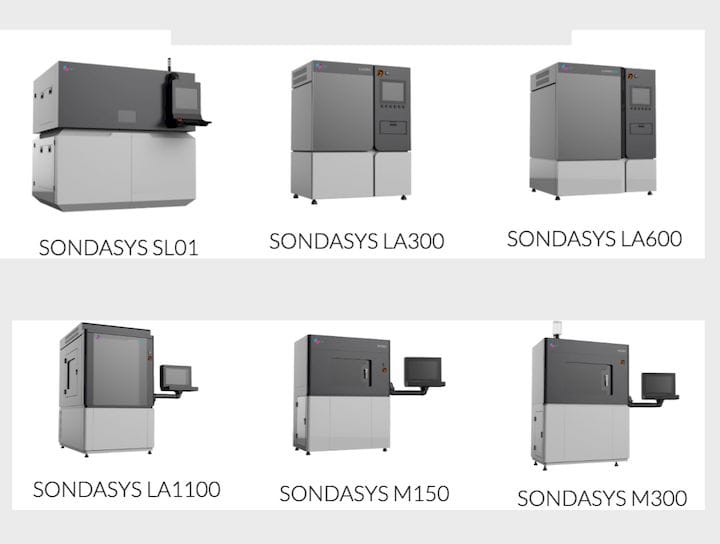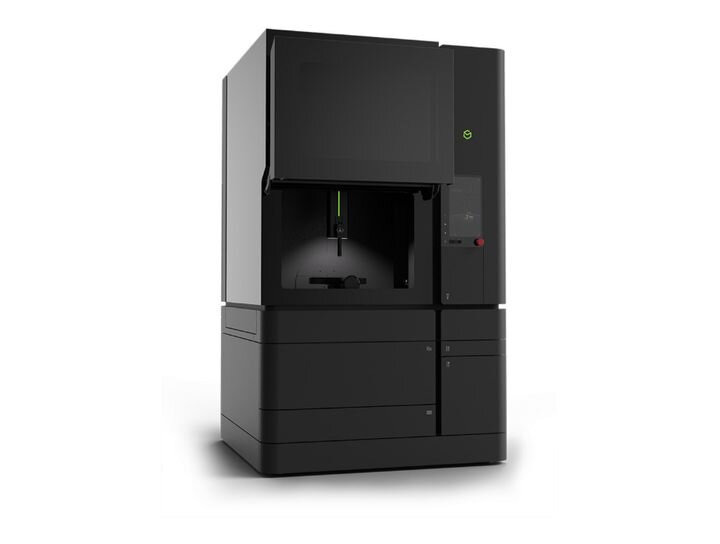![The current SondaSys 3D printer lineup [Source; SondaSys]](https://fabbaloo.com/wp-content/uploads/2020/05/image-asset_img_5eb091b075ff3.jpg)
There certainly are a great many 3D printer manufacturers these days, and it’s hard to keep track of them all. This week I ran across another one that seems to produce a huge line of equipment: SondaSys.
The Poland-based company, which launched in 2015, boasts of 14 years of experience in the 3D printing industry. Their staff have previously spent many years delivering and servicing equipment using FDM, SLA, SLS, 3SP, DLP and PolyJet 3D printing processes.
By leveraging academic connections, the company has been able to produce not just one 3D printer, but now SIX unique machines using three different 3D printing processes. All machines are targeted for industrial use.
Three 3D Printing Processes
The three different 3D printing processes involved are SLA, SLS and SLM. You might notice the first two letters of each process are identical, and there’s a reason for that: these processes are quite similar in many respects.
-
SLA sweeps a laser across a vat of photopolymer resin to solidify material.
-
SLS sweeps a laser across a flat bed of thermoplastic powder to solidify material.
-
SLM sweeps a laser across a flat bed of metal powder to solidify material.
This is a rather ingenious replatforming approach that allowed the company to rapidly develop machines in three different processes by simply changing the target of the laser: a vat of resin or a bed of powder.
Of course, I’m making this sound a lot easier than it actually is. Metal powder, for example, must be fused by laser within a sealed chamber evacuated of oxygen, lest there be an explosion risk. There’s obviously a tremendous difference in the software and tuning of print parameters required for each different process. Nevertheless, it seems that SondaSys has been able to produce equipment that works very well in all processes.
SondaSys 3D Printer Products
Their current lineup includes:
-
One SLS machine, the SL01, with a build volume of 250 x 250 x 300 mm, able to print in PA11 and PA12 thermoplastic powders.
-
Three SLA machines, the LA300, LA600 and LA1100, with build chambers of 300 x 300 x 200 mm, 600 x 600 x 300 mm, and 1000 x 1000 x 600 mm, respectively.
-
Two SLM machines, the M150 and M300, with build volumes of 150 x 150 x 200 mm and 300 x 250 x 350 mm, respectively.
SondaSys Features
All of the machines make use of open materials, which should significantly lower the operating costs as compared with other equipment requiring proprietary materials. However, there is the question of tuning the print parameters for a given material to ensure high-quality results.
SondaSys says the machines are capable of producing objects with walls as thin as 0.1mm, likely due to their focused laser system, which they describe as “The most complex galvo system and high precision CO2 laser”.
The machines also come with two swappable build chambers. This could allow post-processing on an initial print job to take place while a second print job begins on the device. This could save considerable operational time and allows the machine to work at a maximum capacity level.
SondaSys Distributors
SondaSys seems to have distributors located in Poland (obviously), Spain, Iran and the Middle East, and Singapore. It’s not clear whether they intend on marketing their products outside of the EU and Asia, but given the type of machines present, it would not be surprising for them to launch sales in the USA in the future.
Via SondaSys











FELIXprinters has released a new bioprinter, the FELIX BIOprinter, which is quite a change for the long-time 3D printer manufacturer.